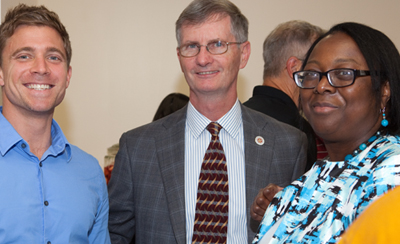
|
|||
|
Dean's Message |
|||
|
Curriculum redesign underway
On July 12-13, a large group of faculty (and two students) developed the next steps for our Curriculum Redesign. We started with an overview of the process to date, the case for redesign that goes back to our early development, and where we are now in that process. The goals of the meeting were the following:
On the next day, group leaders presented their work to the larger group for discussion and questions. We then had a focused discussion on similarities and differences among the models. Major similarities were:
We then discussed the major differences among the models and what people thought about them. After a lively discussion, I committed to taking all of the great feedback and working with the three group leaders and Drs. Littles and Mulrooney to develop the official model that best summarizes the work. We projected to accomplish this within two weeks of the end of the meeting, and then share it with the larger community. This small group is now looking at the results of this work. The plan is to have a series of meetings to discuss the model and identify the next steps.
I was extremely pleased with the energy, enthusiasm and dedication of the participants and look forward to taking our next steps. We all agreed that this was a great beginning but that there was a great deal of future work left to make this happen. I believe we accomplished our objectives, but there are many more details to come.
Dean (Pictured above with Ken Winnard (M.D., '12) and Alma Littles, M.D.)
| |||
 |
 |
 |
| E-mail Alumni Affairs Phone: 850-645-9428 | ||
|
|
|
Florida State University
|
College of Medicine
|
Copyright 2013
|

